Hydrogen Society Promotion Act Enacted
Toward a Forthcoming Hydrogen-based Society
Part 1: Current Status of the Supply Chain
(Provisional translation)
(English ver.) 2024-12-05
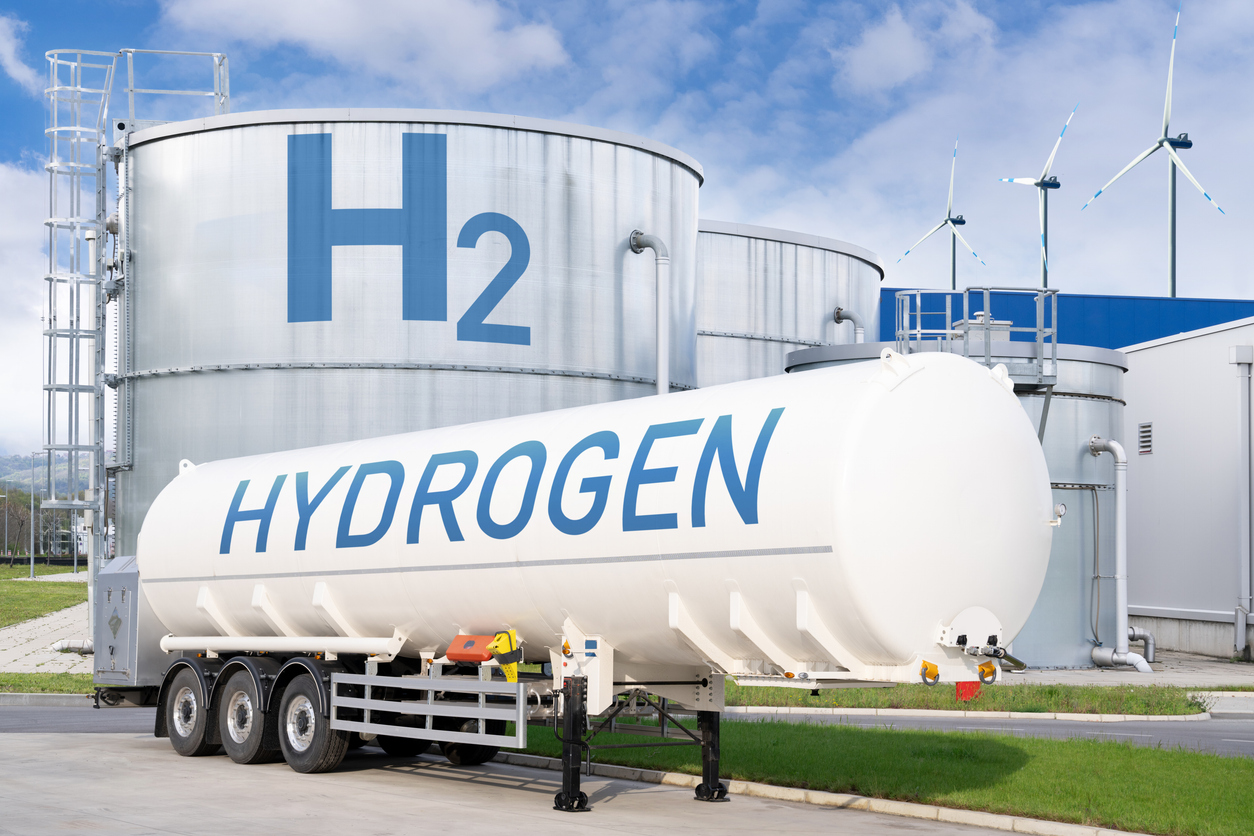
Hydrogen is the key to achieving carbon neutrality. With the demand for hydrogen increasing globally, countries around the world are gradually shifting the focus of their support for the hydrogen industry from technical development to public implementation. Japan has been leading the world with R&D and demonstration experiments for hydrogen. In May 2024, the Hydrogen Society Promotion Act was enacted to strongly support the public implementation of hydrogen utilization. Looking toward a forthcoming hydrogen-based society, we will explain the current situation surrounding hydrogen along with the outline of the Act in Part 1 and Part 2 of this article.
Demand for hydrogen will rise fivefold from 2022 to 2050
Hydrogen can be produced not only from water, but also from other resources, such as coal and gas. Emitting no CO2 during use, it is an environment-friendly source of energy. Additionally, as it can be produced from domestic renewable energy, it is considered a next-generation energy source that will contribute to increasing the self-sufficiency rate of energy.
An international research institute expects that global demand for hydrogen will rise fivefold from 2022 to 2050 in line with the worldwide efforts toward achieving carbon neutrality.
Global demand for hydrogen, etc.
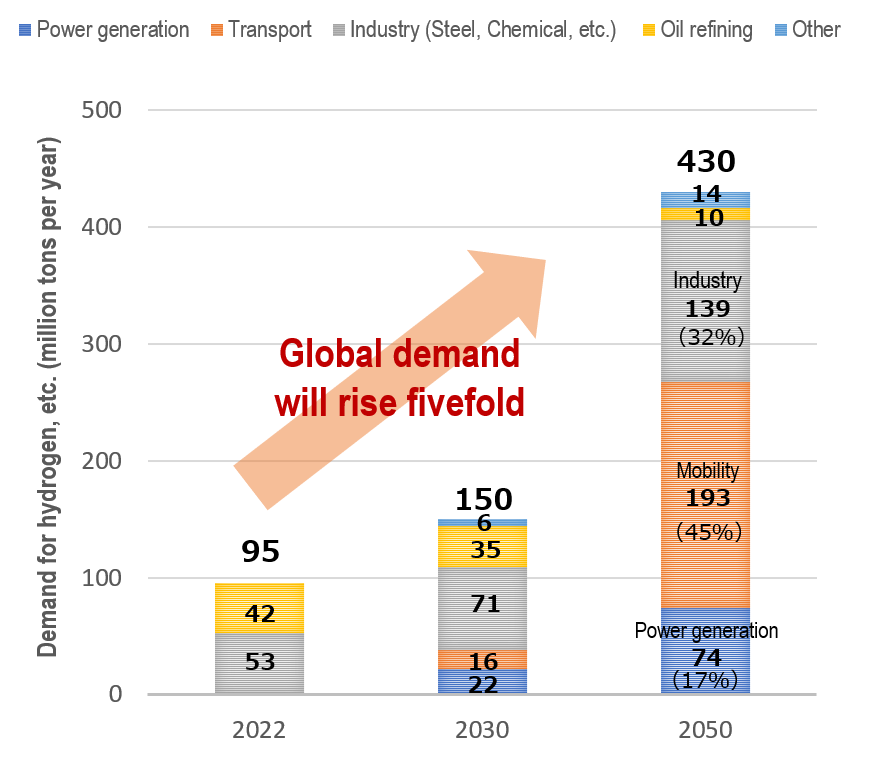
(Source) Net-Zero Roadmap published by the IEA in September 2023
*Calculated based on the NZE scenario (net-zero achieved in 2050)
With the market for hydrogen expected to expand, countries around the world have been accelerating support for their domestic hydrogen industries. Japan formulated the world’s first national strategy, called the Basic Hydrogen Strategy, in 2017. Since then, more than 25 countries, including the EU, Germany, and the Netherlands, have formulated national hydrogen strategies to strengthen their hydrogen-related efforts. In recent years, these countries have been shifting the focus of their support from technical development to commercialization in view of a forthcoming hydrogen-based society.
Against this backdrop, Japan amended its Basic Hydrogen Strategy in 2023, 6 years after its announcement. Whereas the original strategy focused on technical development, the revised version includes industrial and safety strategies for the forthcoming commercialization stage.
Progress in the stages of production, transportation/storage, and utilization
In order to make a hydrogen-based society a reality, it is essential to create a sizable demand for hydrogen and to secure the supply to meet it. In other words, a supply chain must be built that encompasses the stages of production, transportation/storage, and utilization.
Supply sources of hydrogen, etc. and end users
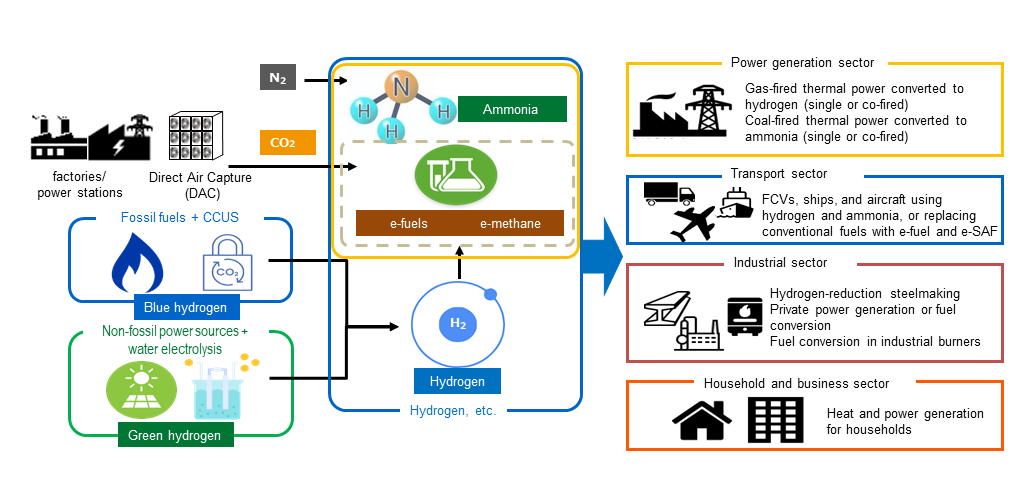
In Japan, technical development and demonstration experiments are advancing in these sectors, with the scope of practical use being expanded. Let us look at the development in each sector in detail.
Production
Hydrogen is mainly produced from fossil fuels or from renewable energy. Making hydrogen from fossil fuels emits CO2; however, the amount of emitted CO2 can be substantially reduced through CCS (Carbon dioxide Capture and Storage) and CCUS (Carbon dioxide Capture, Utilization and Storage). On the other hand, using renewable energy to power electrolyzers to produce hydrogen does not directly emit CO2.
Main methods for producing hydrogen (Examples)
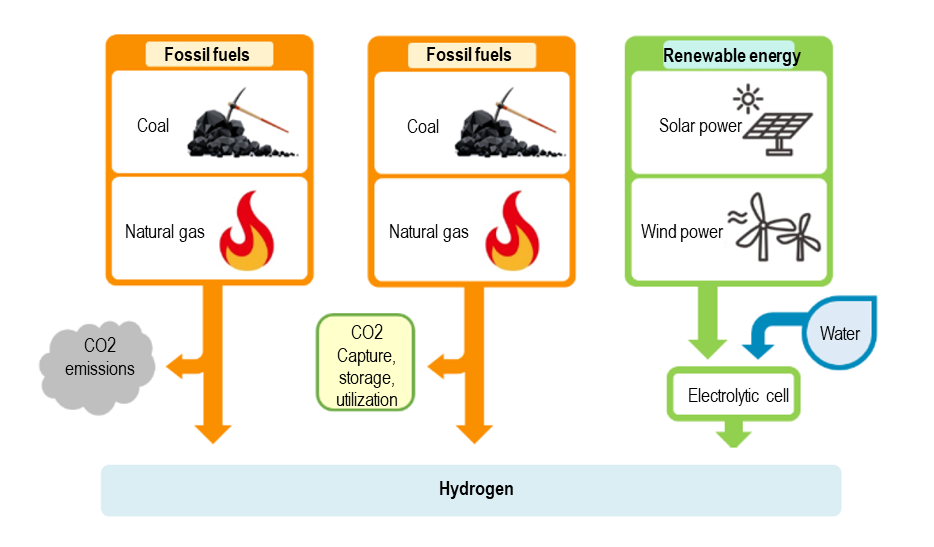
As efforts are accelerating globally to produce hydrogen using electrolyzers powered by renewable energy, several large-scale projects have been announced by countries including Saudi Arabia and Sweden. The development of this method is also being advanced in Japan by companies with expertise in the safe and stable operation of electrolyzers or strengths in innovative technologies for parts and materials.
Transportation/storage
It is difficult to transport hydrogen due to its large volume and high combustibility in a gaseous state at normal temperature and atmospheric pressure. Therefore, converting it to a liquid state or hydrogen compound (hydrogen carrier) is necessary for transportation.
Regarding the transportation of liquefied hydrogen, the world’s first ever demonstration test for large-scale transportation was conducted successfully in 2022. In this project, hydrogen was made from brown coal produced in abundance in Australia, liquefied at a liquefaction plant, and transported to an unloading terminal in Japan.
Liquefied hydrogen carrier MV Suiso Frontier
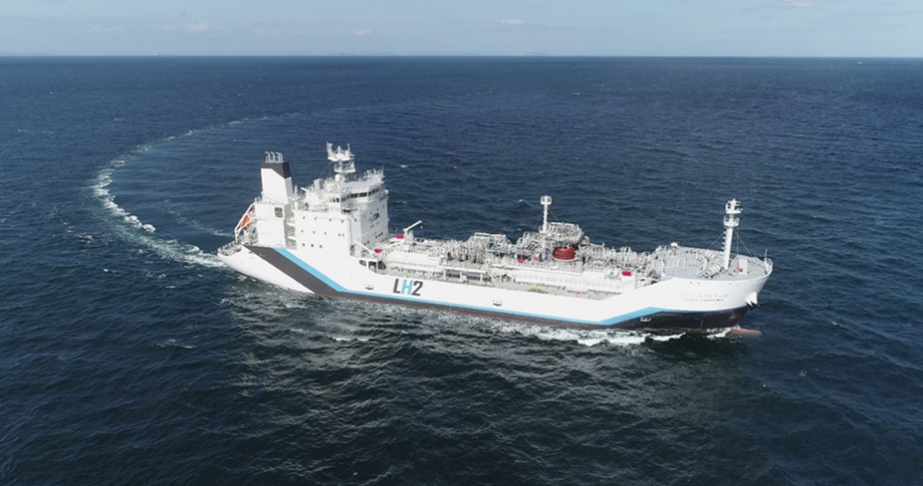
Picture provided by Hystra
Regarding transportation using MCH (methylcyclohexane) composed of toluene and hydrogen, the world’s first trial of international shipment of MCH and stable extraction of its hydrogen succeeded in 2020. In this project, hydrogen was made from natural gas produced in Brunei, converted to MCH at a hydrogenation plant, and re-converted to hydrogen at a dehydrogenation plant in Japan.
Dehydrogenation of MCH (methylcyclohexane)
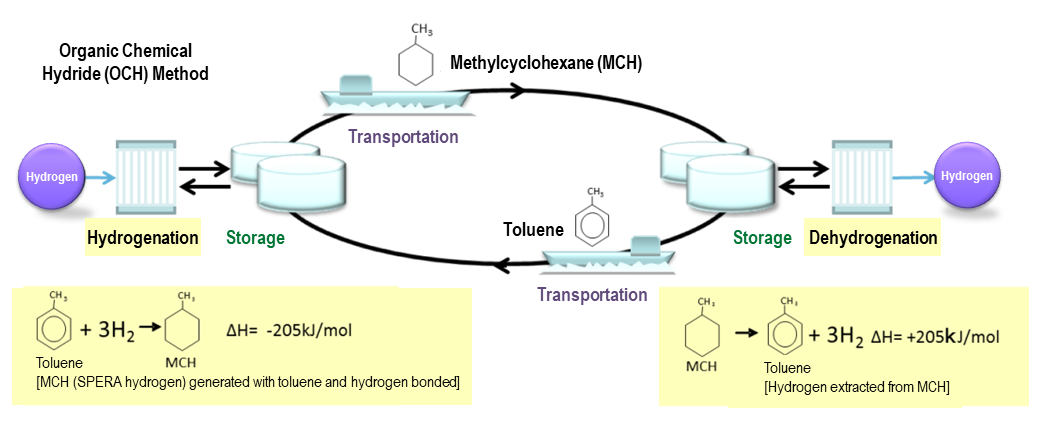
We aim to build large-scale supply chains on a commercial basis by 2030 for both of these methods of transportation. Regarding liquefied hydrogen, building larger-sized ships and tanks is under consideration. Regarding MCH, technological development for dehydrogenation is being advanced utilizing the existing facilities at oil refineries and other plants. Other hydrogen carriers, such as ammonia and e-methane, are considered promising, with development in progress.
Utilization
Hydrogen is expected to be utilized in the mobility (such as FCVs), industry and power generation sectors.
1) Mobility
The utilization of hydrogen is most advanced in the mobility sector. In addition to FCVs and FC trucks, ships and aircraft are expected to use hydrogen in the future.
8,408 FCVs were in service as of May 2024, and further popularization has yet to be realized. FCV trucks have been on the road since 2022, and their use will increase in the future. In view of the further popularization of these types of vehicles, hydrogen stations need to be made larger and deployed in the most suitable locations with the movement of people and goods taken into consideration.
Some enterprises are starting to supply hydrogen from hydrogen stations via a pipeline to neighboring communities for non-vehicle hydrogen demand. Going forward, hydrogen stations are expected to perform multiple functions as supply bases.
2) Industrial use of heat
Hydrogen is expected to be utilized by steelmakers and chemical companies that use high-temperature heat. It will also be used in areas where decarbonization by electrification is difficult. Particularly in the manufacturing sector, some multinational corporations are taking actions toward achieving net-zero over their entire supply chains. Therefore, Japanese companies cannot afford to waste time in decarbonizing their factories.
Take Denso Fukushima, which manufactures devices with heat-exchangers for vehicles such as car air-conditioners and fuel injectors for gasoline engines. The company, in cooperation with Toyota Motor Corporation, is conducting a demonstration project whereby hydrogen is produced in electrolyzers powered by renewable energy so that the hydrogen can be utilized in a gas furnace. The project saw a tangible result in March 2024 when the company started manufacturing radiators using hydrogen produced within the factory.
Another example is Taisei U-Lec Corporation, which sells construction materials (pre-cast concrete) manufactured at their own factory and constructs housing complexes using these materials. At its Kawagoe factory, an energy system model which simulates an entire region within the factory is being developed. To be specific, the company operates a small package-type electrolyzer system (P2G: Power to Gas) using electricity generated by solar power generators installed onsite. The hydrogen produced by the equipment is converted to heat in a hydrogen boiler, which is utilized for curing concrete.
3) Power generation
By replacing fuels used at thermal power stations with hydrogen, CO2 emissions can be reduced. Japan has a technical advantage in hydrogen power generation and Mitsubishi Heavy Industries developed a large-sized gas turbine to co-fire hydrogen (which is more combustible than natural gas) with other fuels at a ratio of 10% on a heating value basis (30% on a volume basis). Furthermore, the company is now trying to achieve a co-firing ratio of more than 10%, with a view to replacing natural gas completely with hydrogen by developing suitable equipment for mono-firing.
Hydrogen gas turbine

(Source) Mitsubishi Heavy Industries
Japanese companies are participating in large-scale hydrogen power generation projects in the Netherlands and the United States, and further Japanese participation in overseas projects is anticipated.
While efforts are underway at home and abroad to build supply chains toward a forthcoming hydrogen-based society, the Hydrogen Society Promotion Act* was enacted in May 2024 to popularize hydrogen as an energy source and promote its utilization.
* The Act on Promotion of Supply and Utilization of Low-Carbon Hydrogen and its Derivatives for Smooth Transition to a Decarbonized, Growth-Oriented Economic Structure
Part 2 of this article will elaborate on the Hydrogen Society Promotion Act.
Divisions in Charge
About this article
Hydrogen and Ammonia Division, Energy Efficiency and Renewable Energy Department, ANRE
About the Special Contents
Research and Public Relations Office, Commissioner’s Secretariat, ANRE
![]() The original Japanese text of this article; Click here
The original Japanese text of this article; Click here